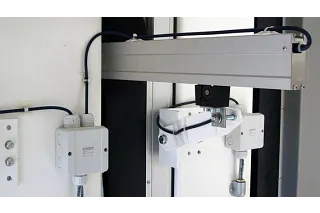Skift sprog :
Testrapporter af fiberoptiske kabler
Se alle vores testrapporter om holdbarheden af vores fiberoptiske kabler her.
CFROBOT5 fiberoptisk kabel

Brug af CFROBOT5 i det virkelige liv
Det fiberoptiske kabel fra CFROBOT5-robotkabelfamilien forbindes altid umiddelbart med en seksakset leddelt robot, fordi torsion er så vigtig i den anvendelse. Men kablet har også andre anvendelser - kunderne skal meget ofte overføre følsomme signaler. Disse signaler kommer fra aktuatorer, der styres i frie, uspecificerede bevægelser, og her spiller torsion også en rolle. Ekstremt præcise målinger producerer en utrolig mængde data, som kan transporteres mest pålideligt uden interferens via en FOC. Udfordringen er at beskytte det følsomme glasfiberelement i kablet, så det ikke bliver beskadiget, heller ikke på lang sigt.
Fiberoptisk kabel CFLG.2LB

Brug af CFLG i det virkelige liv
Maskiningeniører og producenter af døre og animationsudstyr til messer var på udkig efter et ekstremt kompakt kædesystem, der er nemt at installere, inklusive styring. Vi reagerede med vores microflizz, som bruger en FOC, så data kan overføres i meget små installationsrum. Vores CFLG.LB. er en kabelfamilie, der pålideligt kan overføre data i små bøjningsradier og på lange strækninger. Dens slidstærke yderkappe af TPE gør det muligt at gøre dette meget pålideligt i lang tid.
Rådgivning
Jeg vil med glæde besvare deres spørgsmål personligt.
Levering og vejledning
Personlig betjening:
Mandag til fredag fra 7:00 til 20:00.
Lørdag fra 8:00 til 12:00.
Online:
24h